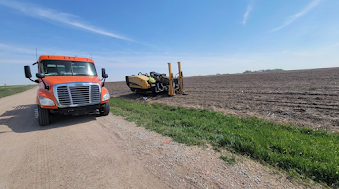 |
Naloxone is part of harm-reduction strategies.
(Photo by NEXT Distro, Unsplash)
|
Access to drug overdose prevention and addiction treatment in rural America can be almost non-existent. In Washington County, Maine, a remote area ravaged by drug use and overdose deaths, there was little help for substance-related issues. But a non-profit with federal dollars from the Substance Abuse and Mental Health Services Administration is working to change the county's number of drug-related medical problems and deaths,
reports Taylor Sisk of
The Daily Yonder. "In 2022, SAMSA awarded
$30 million to 25 grantees to support community-based overdose-prevention programs, syringe services programs, and other harm reduction services. . . .
MaineHealth received $1.2 million for a statewide overdose- and infection-prevention initiative."
 |
Washington County, ME
(Wikipedia map)
|
Because Maine is small -- California is five times its size -- fewer people may know the extent of the state's drug problems. "Maine is the
most rural state in the country with one of the highest
drug-overdose rates. . . . It has one of the
highest rates of acute hepatitis B. And it has the
highest rate of hepatitis C, largely attributed to injection drug use," Sisk writes. "Washington County is the nation's easternmost county – the last stop on the line. It has a
Walmart in Calais, the county's largest town, pop. 3,032. But if you live in Machias, the second largest town, pop. 2,062, it's an hour's drive. You're more likely to rely on the
Family Dollar for your essentials. There's no bus service and one taxi company. . . . It has the highest poverty rate in the state."
In 2022, MaineHealth "launched Project DHARMA – Distribution of Harm Reduction Access in Rural Maine Areas – a collaboration with community-based organizations, including syringe services programs. Washington County became a beneficiary," Sisk reports. Harm reduction care "embraces a set of evidence-based strategies for reducing the negative consequences of drug use to keep people alive and as healthy as possible until such time as they should be ready to seek treatment."
Kinna Thakarar is an infectious disease and addiction medicine physician for MaineHealth and Project DHARMA's lead researcher. She told Sisk, "The services Project DHARMA is funding are evidence-based. Among the supplies and services syringe services programs typically provide in addition to clean syringes are saline, Band-Aids, condoms, information, and referrals. . . . They provide
naloxone, a medication that quickly reverses the effects of an opioid overdose, and offer fentanyl test strips, an increasingly urgent need."
"Another critical service this grant will fund is one advocates have fought hard to launch: drug testing using handheld spectrometers. Outreach workers will test drugs to determine their contents; the drugs will then be sent to
Colby College for confirmation. Other academic partners are providing technical assistance," Sisk writes. "But gaining permission to do so wasn’t easy. It required passing legislation 'so that none of us would get arrested in doing this evidence-based public health work,' Thakarar said. The passage of L.D. 1745, signed into law this summer, allows select individuals to possess 'nominal amounts' of illicit or controlled substances for the purposes of drug testing."





.jpg)





















